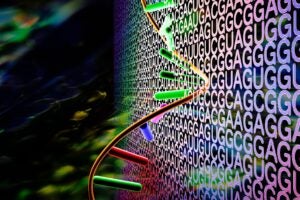An international team of conservation scientists from Australia, the United Kingdom and United States, including University of Texas at Austin Professor Camille Parmesan, calls for new conservation tactics, such as assisted migration, in the face of the growing threat of climate change.
They report their policy ideas in a paper published July 18 in the journal Science.
The authors argue that both the rapid rate of climate change and the presence of human-made barriers to natural movement will prevent many species from shifting where they live in response to changes in local climate.
They suggest that human-assisted translocation of individuals, often termed “assisted migration” or “assisted colonization,” may be necessary to ensure colonization of new geographic regions as parts or all of the historical species’ range becomes unsuitable.
“When I first brought up this idea some 10 years ago in conservation meetings, most people were horrified,” Parmesan said. “But now, as the reality of global warming sinks in, and species are already becoming endangered and even going extinct because of climate change, I’m seeing a new willingness in the conservation community to at least talk about the possibility of helping out species by moving them around.”
Parmesan and her colleagues point out that assisted migration can never be a major solution for wildlife, but could conceivably be used to help a few species that biologists and the public deem to be important enough for the effort and could otherwise go extinct.
The species would need to be easy to collect, raise or move. Its habitat requirements would need to be well understood, and there would need to be viable habitat options outside of the species’ current range.
The authors present a conceptual framework for just how such decisions might be made.
This framework includes fundamental biological questions which much be addressed before decisions to act can be made, such as risk of extinction if nothing is done versus risk of harm to the new community if the species is moved there.
In addition to biological considerations, their framework includes social dimensions of the issue, such as cost and inherent value people place on the target species.
The authors argue that the most suitable scenario is when the risk of extinction of the target species is high in its historic range, but the risk to the community into which the species will be imported is low. It might also be appropriate when the likelihood of successful colonization is high, but the time and cost to perform the transplantation is low.
“Passively assisting coral reef migration may be acceptable, but transplanting polar bears to Antarctica, where they would likely drive native penguins to extinction, would not be acceptable,” Parmesan said.
“Ultimately, the decision about whether to actively assist the movement of a species into new territories will rest on ethical and aesthetic grounds as much as on hard science,” she said. “Conservation has never been an exact science, but preserving biodiversity in the face of climate change is likely to require a fundamental rethinking of what it means to ‘preserve biodiversity.'”
Parmesan’s coauthors include Ove Hoegh-Guldberg (lead author) and Hugh Possingham of the University of Queensland, Lesley Hughes of Macquarie University, Sue McIntyre at CSIRO Sustainable Ecosystems, David Lindenmayer at The Australian National University and Chris Thomas at the University of York.



